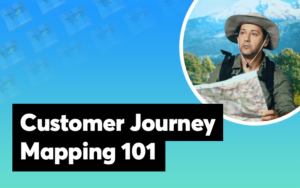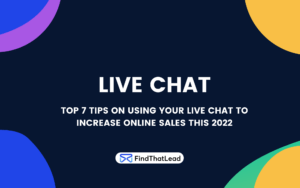Today’s customers are different! In 2022 it’s necessary having a Customer journey map built.
With an evolving customer behavior in the last couple of decades, 8 in 10 customers today consider their experience with a company as essential as the product they purchase itself.
Thanks to adaptive mobile technologies, customers today are interacting with brands at multiple touchpoints: social media, peer referral, company events, product catalogs, online advertisements, or websites.
Someone buying your service is just one step of a long journey.
The purchase or conversion is influenced by a series of moments leading up to the purchase.
A customer journey map helps businesses ensure a positive experience during all interactions.
Brands are leveraging the user journey map to identify customer pain points, boost engagement, and in turn, create loyal customers and satisfied employees.
Let’s move ahead talk more about customer journey mapping, the value it brings to your marketing strategies & the company as a whole.
We will also explore how a customer journey map drives customer acquisition, boosts retention & generates revenue for your organization.
What Is a Customer Journey Map?
How did a visitor go from point A (not being a customer) to point B (becoming a customer)?
A customer journey map breaks down the conversion process for you, that too visually! The map helps companies put themselves in the shoes of the shoppers and endure a customer-level view of the business.
A McKinsey study indicates that companies that build their marketing plans around the customer journey & deliver engaging experiences over time, grow faster and become more profitable.
This, customer journey maps lead to actionable insights & crucial reference points that can help businesses directly relate to and improve the customer experience.
How Does Customer Journey Mapping Boost Marketing Efforts?
The consumer of today wants a highly personalized experience & this very well includes your company’s marketing and customer service efforts.
Marketers can revamp their strategies and start targeting a prospect across multiple touchpoints.
For instance, if a lead visits your website, you can retarget the same lead later with social media ads or newsletters.
This way, marketers can connect the dots and encourage the prospect towards buying a product or service.
Through customer journey mapping, brands can attract more leads, optimize the customer onboarding process, explore different buyer personas & understand their customers.
Now that we have understood what a customer journey map is, let’s move ahead and know how we can actually create one!
Define the Goals & Set the Scope
When it comes to understanding customer expectations and delivering a personalized experience across all touchpoints, your brand’s customer journey mapping plays an imperative role.
You must ask yourself why you are making this map in the first place, what objectives are you directing the map towards, for whom is the map specifically about, etc.
The first step is to set goals; brands can start by identifying their existing and future customers and then create buyer personas.
Once you have clear information on demographics, psychographics and persona, you can direct stages of the customer journey map towards the customers.
Brainstorm All the Touchpoints
A touchpoint is a point of customer contact. It is where a potential customer comes in contact with your brand.
It may be before, during, or after they purchased from you. For instance, a customer might come across your brand online through paid ads, email marketing, social channels, reviews, or mentions.
Identifying customer touchpoints is important as the method gives you insight into the actions of your customers.
The step also includes identifying customer pain points, roadblocks, areas of friction in the buying funnel.
Defining customer touchpoints makes up most of your customer journey map and consumes most of the time.
To speed up the process, you may collect customer and persona information on slides and use different PowerPoint color schemes to compare-contrast in personas.
Creating the Map
Now that you have all the information to create a customer journey map, it can be tricky to assemble all the data in a digestible and visually appealing manner.
To ease the effort and quickly create the map, you can use ready-to-use templates from SlideModel.com.
You can plot the customer touchpoints on templates such as the 4-step funnel concept, horizontal customer journey mapper, and more.
The templates bring aboard pixel-perfect design, ease of formatting & helps you create a customer journey map in no time!
Wrapping It Up
Through a customer journey map, brands can focus on the customer perspective, understand their wants and needs better.
The map is a proven framework since it helps businesses drive great customer insights, improve internal workflows, increase conversions and bring aboard, eye-popping return on investment.









 BONUS:
BONUS: The Challenge: Join this free course and I guarantee that after 5 days you will have the necessary skills to start generating B2B clients Growth Hacking and Prospecting techniques.
The Challenge: Join this free course and I guarantee that after 5 days you will have the necessary skills to start generating B2B clients Growth Hacking and Prospecting techniques.